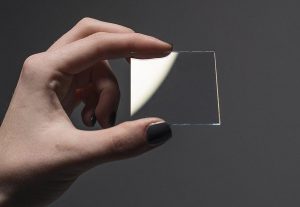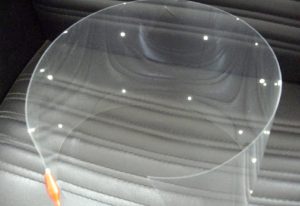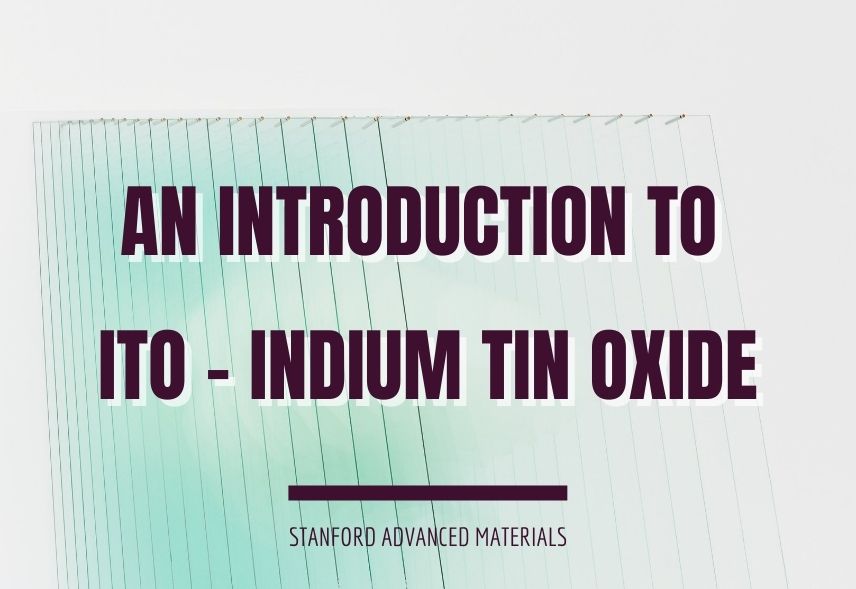One of the most widely used transparent conducting oxides is indium tin oxide (ITO) — and for very good reasons. Indium tin oxide is well known for its electrical conductivity, optical transparency, and how easy it is to deposit as a thin film. In most cases, thin films of ITO are deposited on surfaces by physical vapor deposition. Indium tin oxide (ITO) has unique properties that make it suitable for application as a thin film material in flat panel displays.
In this post, we’ll review the essential properties and applications of indium tin oxide (ITO), but before we delve into that, let’s look at a more detailed explanation for indium tin oxide.
What is Indium Tin Oxide?
Indium tin oxide is basically a type of transparent conducting oxide (TCO) containing indium, tin, and oxygen in diverse proportions. It can either be considered an alloy or a ceramic material, and this depends on the oxygen content in the mixture. In other words, indium tin oxide is not a chemical compound, even though it contains these three elements in seemingly stable states.

For instance, Indium tin oxide often occurs as an oxygen-saturated composition with 74% Indium, 18% Tin, and 8% Oxygen. Indium Tin Oxide can also be described as a solid solution of indium(III) oxide (In2O3) and tin(IV) oxide (SnO2) with unique properties as a transparent semiconductor material.
Related Post: Indium Tin Oxide in Chemistry
Materials Properties of Indium Tin Oxide
There are two major properties of Indium Tin Oxide (ITO) that account for its diverse application as a transparent conducting oxide (TCO); it has a relatively high electrical conductivity and optical transparency. Also, ITO is an inexpensive material when compared to other TCOs. It can easily be deposited as a thin film on glass, PET, and other surfaces.
| Property | Value | Reference |
| Mass density | 6.8 g/cm3 | J Vac Sci Tech A 19:5(2043-7); 2001 |
| Young’s modulus (sputtered, 10wt% SnO2) | 116 GPa | Thin Solid Films 278:1-2(12-17); 1995 |
| Poisson ratio (sputtered, 10wt% SnO2) | 0.35 | Thin Solid Films 278:1-2(12-17); 1995 |
| Tensile or fracture strength failure strain (105 nm film) failure strain (16.8 nm film) |
0.022 0.003 |
MRS Symp Proc 666 (F3.24.1 – 12); 2001 |
| Residual stress on silicon (sputtered, 10wt% SnO2) |
-2.1 ~ -2.3 GPa | Thin Solid Films 278:1-2(12-17); 1995 |
| Index of refraction (increases with anneal) |
~1.7 @633 nm 1.8 – 2.0 |
Appl Surf Sci 179:1-4(181-90); 2001 J Vac Sci Tech A 19:5(2514-21); 2001 |
| Electrical conductivity (“standard” sputtered) (epi, 5.7wt% SnO2) |
~104 S/cm 1.3 x 104 S/cm |
Thin Solid Films 411:1(1-5); 2002 Vacuum 66:3-4(419-25); 2002 |
| Piezoresistivity: gage factor (sputtered) (laser deposited) |
0.2 ~ -14.7 2.04 ~ -77.71 |
J Appl Phys 91:9(6194-6); 2002 Thin Solid Films 288 (279-286); 1996 |
| Wet etching method | oxalic acid HCl/HNO3 |
Langmuir 18:1(194-7); 2002 J Electron Mat 25:12(1806-17); 1996 |
| Plasma etching method | CH4/H2/Ar | J Vac Sci Tech A 16:4(2177-86); 1998 |
| Adhesion to silicon dioxide | good – in pulloff tests of 1000 Å ITO and 1300-30,000 Å SiO2, failures occurred in substrate rather than ITO/oxide. | Appl Surf Sci 115:1(96-102); 1997 |
| Biocompatibility | no observed inhibition of cell growth; small amount of protein adsorption | Proc IEEE/EMBS Conf on Microtechnologies in Medicine & Biology (261-4);2002 |
The melting point of ITO is within the range of 2800°F – 3500 °F (1800K – 2200K), depending on the composition of the material. The most widely used indium tin oxide (ITO) material has a composition of ca In4Sn; It is an n-type semiconductor with a large bandgap of around 4 eV. Other unique properties of ITO include its low electrical resistivity and optical transmittance (of the thin film), which is greater than 80%. To a great extent, these properties are utilized in making touchscreen devices, such as smartphones.
Common Applications of Indium Tin Oxide (ITO)
Indium tin oxide (ITO) is an essential transparent conducting oxide used in many diverse applications, both in both research and industry. Here are some common applications:
-
Flat-panel displays
Among the many options available for flat panel LCDs (liquid crystal displays), Indium Tin Oxide remains a popular choice. The liquid crystal is located between two polyamide orientation layers and the indium tin oxide layers. ITO thin films are used primarily to serve as anti-reflective coatings and for liquid crystal displays (LCDs) and electroluminescence, where the thin films are used as conducting, transparent electrodes.

As reliable transparent conductive coating materials displays, such as LCD, plasma, OLED, touch panels, and electronic ink applications, ITO is often a go-to choice.
-
Solar cells
The low resistivity property of indium tin oxide is one of the properties of the material that make it suitable for applications in flat panel displays and solar cells. However, its function in solar cells is different. In a typical thin-film CdTe solar cell, the sunlight passes through the top glass surface and ITO layer, generating electricity in the active CdTe/CdS layers.
-
Smart windows
Indium tin oxide (ITO) thin films for glass substrates are often used in making glass windows, which is an efficient strategy for conserving energy. In vehicles, ITO is utilized in windshields. Also, thin films of ITO deposited on windshields are utilized to defrost aircraft windshields. The heat that does the actual defrosting is produced by applying a voltage across the ITO film.
-
Lamps
ITO green tapes are used in making electroluminescent lamps that are functional and fully flexible. Thin films of indium tin oxide are utilized in organic light-emitting diodes (LEDs, as the anode) and EMI shieldings.
Other uses of ITO include optical coatings, infrared-reflecting coatings in automobiles, and sodium vapor lamp glasses. It is also used in electrowetting on dielectrics, gas sensors, antireflection coatings, Bragg reflectors for VCSEL lasers, and so on.
Other Types of Transparent Conductive Oxide
Aluminum-doped zinc oxide (AZO)
Aluminum-doped zinc oxide (AZO) is another widely used transparent conductive oxide. It has a relatively high conductive metal oxide composite containing plenty of aluminum oxide and zinc oxide materials. It is a mixture of aluminum, zinc, and oxygen, and like ITO, AZO can occur in varying proportions, depending on the number of components appearing in each case. AZO has been applied as the electron transport layer in solar cells and organic light-emitting devices.
Further Reading: Everything You Need to Know About AZO Sputtering Targets
Fluorine-doped tin oxide (FTO)
Fluorine-doped tin oxide (FTO) is a popular material utilized in transparent electrode applications. However, the synthesis of the material is not as common as the others. It is commonly utilized in gas-detecting sensors, and photothermal converters, and it serves as thermal insulation in houses.
Conclusion
Thanks for reading this passage and hope that you now have a basic understanding of indium tin oxide. Stanford Advanced Materials (SAM) is a leading sputtering target manufacturer based in Lake Forest, California. If you feel interested in the ITO sputtering target, you can go to our product page for more information, or directly send us an inquiry. You can also contact us via target@samaterials.com. Free samples are available.





